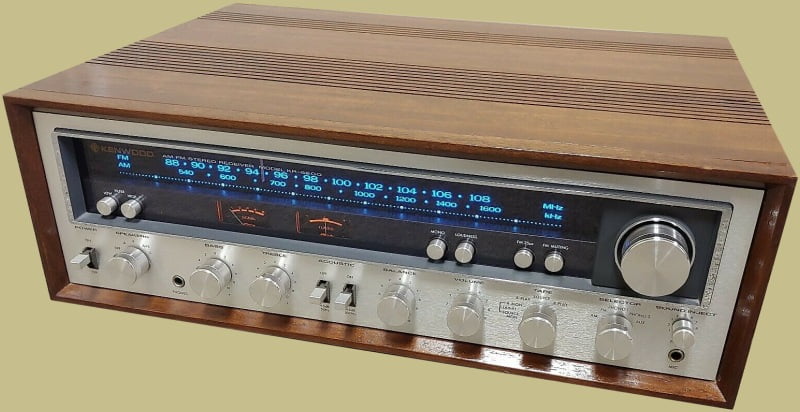
The Kenwood KR-6600 was introduced in 1976 and was part of Kenwood’s KR-X600 lineup that included the KR-3600, KR-4600, KR-5600, KR-6600, KR-7600, and KR-9600. The KR-6600 was obviously an upper mid range offering from Kenwood and it had an adequate amount of power and features for the average user.
Style
The KR-6600 is a nice looking receiver, especially with its optional wood cabinet which has unique venting slots edge to edge on the top. Most of the KR-6600’s you’ll see for sale do not have the wood cabinet but instead a black metal case.
Kenwood’s mix of lighting and knob layout make for an aesthetic front panel. The meters are back lit by actual orange bulbs which was unique at the time. Of course, finding orange replacement bulbs today isn’t so easy. The dial face is black with nice blue backlighting for the tuning scale. The tuning needle has a red bulb at the tip which some people refer to as the ‘ball of fire’.

The front panel features both signal strength and tuning meters, bass and treble controls, and the usual balance, loudness, and volume controls. What is unique about the KR-6600 are the ‘Acoustic’ switches and the Sound Inject control.
Acoustic Boost Switches
In addition to the click-stop type tone controls and the high and low filters, the KR-6600 has two “acoustic” switches that let you boost the 50 Hz and 800 Hz regions of the frequency spectrum by 6 dB. The 50 Hz boost can overcome bass deficiencies in the music, speakers or listening area, while the 800 Hz boost lends extra “presence” to the sound, making vocals clearer. After a little experimenting, you can tailor the music to your liking.
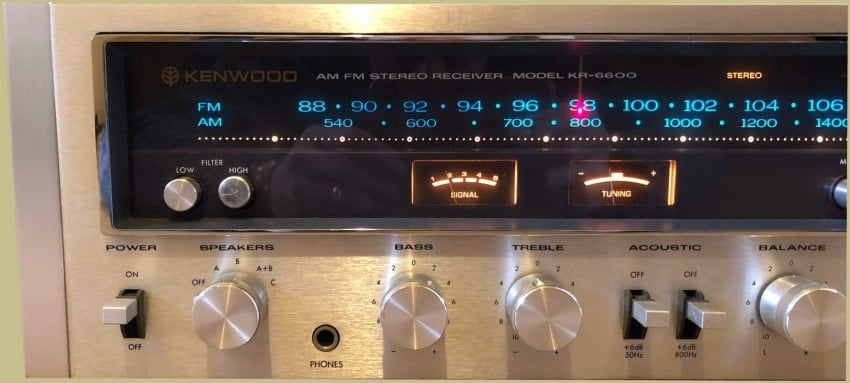
Sound Injection
You can plug a microphone into the front panel MIC jack and sing, play or deejay along with music that is playing. The resulting you-plus-the-program mix is heard over the speakers but can also be taped. If you turn the MIC level up, the level of the other program material goes down to let you get just the right balance of sound.

I’m not sure how often someone would use this feature now days but just in case here are the sound injection procedures according to Kenwood:
Sound Injection fulfills its function both in a selected source of selector and mic-mixing in tape dubbing. Up and down of mix level can be operated by pulling injection level switch toward you, and source level decreases just after turning up mic level clockwise. By using it. you can make your favorite tape library and enjoy a background music with a mic.
NOTE: Mixing recording can be recorded only on a tape deck connected to tape B Mixing recording can not be recorded on a tape deck connected to A.
Operating Procedure –
“In Case of Tape Switch (Source)”
- Set a selector switch to your favorite position.
- Connect one tape deck to TAPE A jacks and the other to TAPE B jacks on the rear panel.
- Hold each tape deck in recording mode.
- Pull a sound injection level switch toward you, ON is set.
- Start 2 tape decks simultaneously. The selected source in selector is recorded in TAPE A and TAPE B at the same time.
- Furthermore, mic sound can be mixed to TAPE B.
- When a using tape deck has 3 heads, you can monitor recording mode, switching over Tape Switch to A PLAY and B PLAY.
“In Case of Tape Switch (A ► B)“
- Connect one tape deck to TAPE A jacks and the other to TAPE B jacks on the rear panel.
- Playback of the tape deck connected to tape A jacks. and hold the tape deck connected to tape B jacks in recording mode.
- Pulling a injection level switch toward you, ON is set.
- Start 2 tape decks simultaneously.
- Mic sound can be mixed to tape B.
- Switch over a tape switch to B MON and SOURCE, and by monitoring a recording of tape B, injection level switch can be operated suitably.
Here are the Kenwood KR-X600 models with their specs and retail prices at the time.

The KR-6600 was priced at around $450 while the top-of-the-line KR-9600 was priced at around $750.
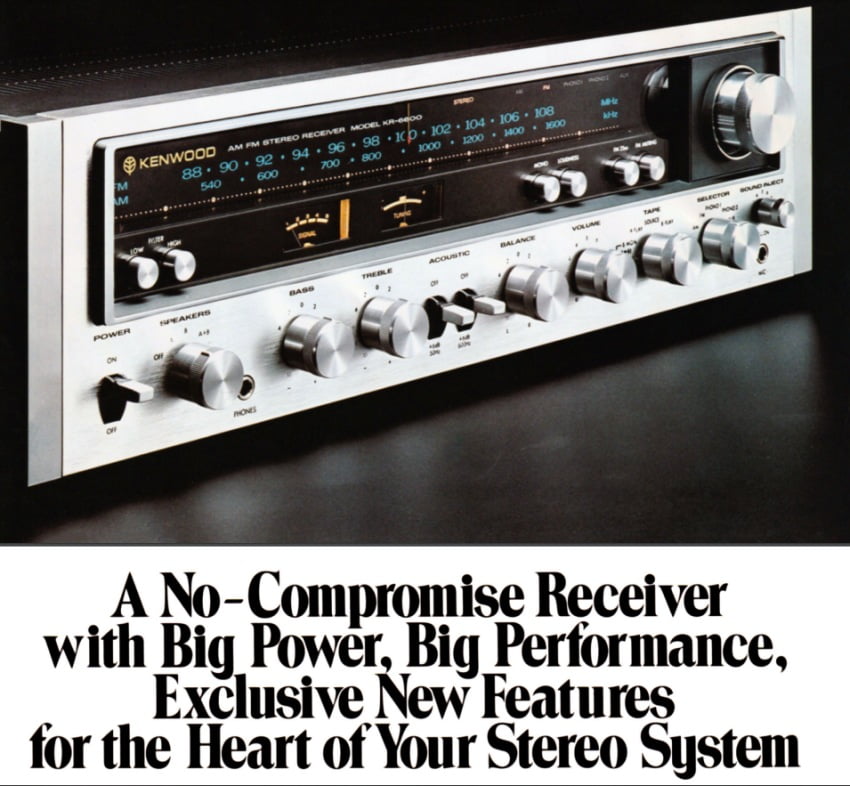
Amplifier
The KR-6600 produces 60 watts per channel with distortion at less than 0.3%.
Kenwood engineers, among the first to introduce direct coupling in power amplifiers, took the KR-6600 a step further with pure complementary symmetry in the power stages. The use of PNP and NPN transistors in both the driver stages and the output stages enables the power amplifier of the KR-6600 to operate over a much more linear region than is possible from ordinary direct-coupled designs. The result is not only better bass response and crisp transient response over the entire audio spectrum, but appreciably less distortion at all power levels.
Power Supply
The Kenwood KR-6600 features large capacitors in dual positive-negative power supplies to extend low frequency output and insure excellent transient response. The unit’s unusually high power storage capacity, in combination with massive, cool-running power transformers and high output transistors mounted on oversize heat sinks, provides the energy the amplifier requires to reproduce clean, clear sound and thermally stable operation even under conditions of extended full power output.
Circuit Protection
The KR-6600 is equipped with multi-protection circuitry that not only guards the receiver itself but also protects speakers from any possible damage from power overload. Special “Area of Safe Operation” circuits constantly monitor the amplifier’s operation, shutting off the power instantly should safe operating conditions be exceeded. In addition, gold-plated contact relays protect speakers from overload or dangerous power surges.
Phono Amp
Kenwood engineers designed the phono equalizer and control amplifier sections of the KR-6600 with, what were at the time, innovative operational amplifier integrated circuits. They cut distortion well below levels previously achieved and brought the signal-to-noise ratio to new highs for phono play.
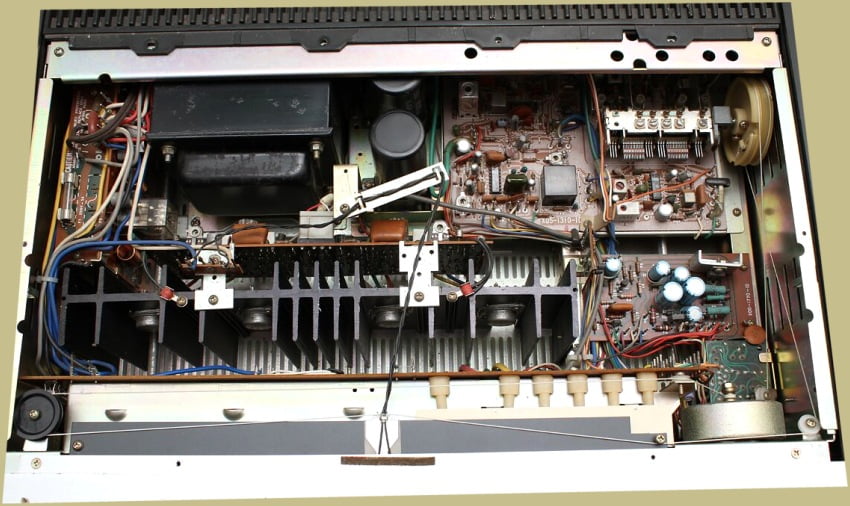
Tuning Specs
- FM input sensitivity 1.7 pV (IHF), Selectivity 80 dB. Capture ratio 1.5 dB, Stereo separation 35 dB from 35Hz-10 KHz
- Special circuitry includes: FM Input stage with Dual Gate MOS FETs: Wideband VHF demodulator: Fixed phase PLL demodulator: IF amplifier with ceramic filters: IC medium wave section
- Large, clearly defined tuning with FM calibration in 200 KHz divisions
- Separate meters for signal strength and center tuning
- Switchable de-emphasis for future FM Dolby transmissions
- Switchable interstation muting
FM Tuner
Low noise MOS-FET’s and silicon transistors are used in the KR-6600 to provide maximum sensitivity (1.7pV) and noise-free reception of even the weakest signals. At the same time, low noise MOS FET’s prevent overload of the RF stage from strong local signals which could otherwise cause inter modulation distortion. Thus the KR-6600 handles both weak and strong signals with equal facility and minimal distortion.
Kenwood used a unique type of IF filter designed to give better selectivity and tonal accuracy to FM. Known as the “flat group delay” filter, it combines a 3-stage, 6-element solid state filter and integrated circuit to provide high gain, early full limiting and stability at any signal strength. The 1.5 dB capture ratio and the 80 dB alternate channel selectivity of the KR-6600 are a direct result of this IF design.
Kenwood also implemented what they called “quadrature demodulation.” This method of distortion-free signal reception, delivers clean, crisp FM reception
Overall, the KR-6600’s FM tuner is excellent..

Back Panel
The back panel has connections for three sets of speakers, two turntables, an AUX input and two tape decks.
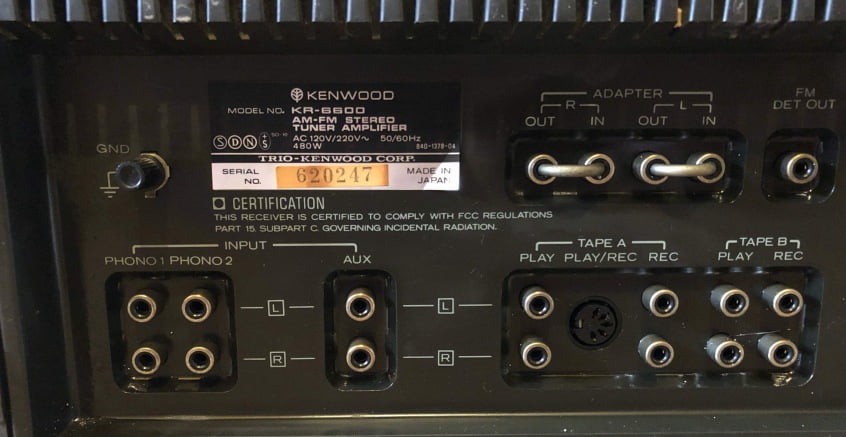
The jumpers you see above are unfortunately not for main-in or pre-out. They are for a Dolby adapter which would not be used these days. Main-in or pre-out connections would have been much more useful.
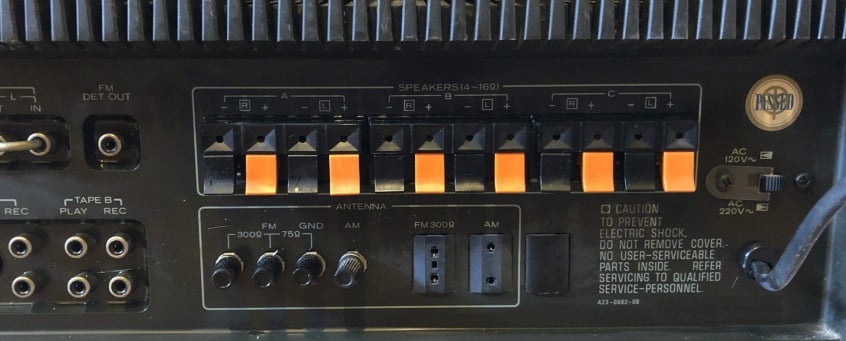
Kenwood KR-6600 features:
- 2 x 60 W RMS at 8 ohms, both channels driven from 20Hz – 20 KHz. Distortion less than 0.3%
- Direct coupled amplifier stages with fully complementary power output stage
- DLOA (Dual Line Operational Amplifier) system
- Negative feedback bass and treble controls
- ‘Acoustic’ controls provide +8 dB at 50 Hz and 800 Hz
- Loudness control
- High and low filters
- Input facilities for two tape recorders with A-B dubbing and tape through circuit
- Sound Inject circuit
- Double protection circuits and delay start circuitry
- Connections: 3 pairs of loudspeakers, 2 tape decks. 2 record decks, headphones, microphone. auxiliary
KR-6600 Specifications
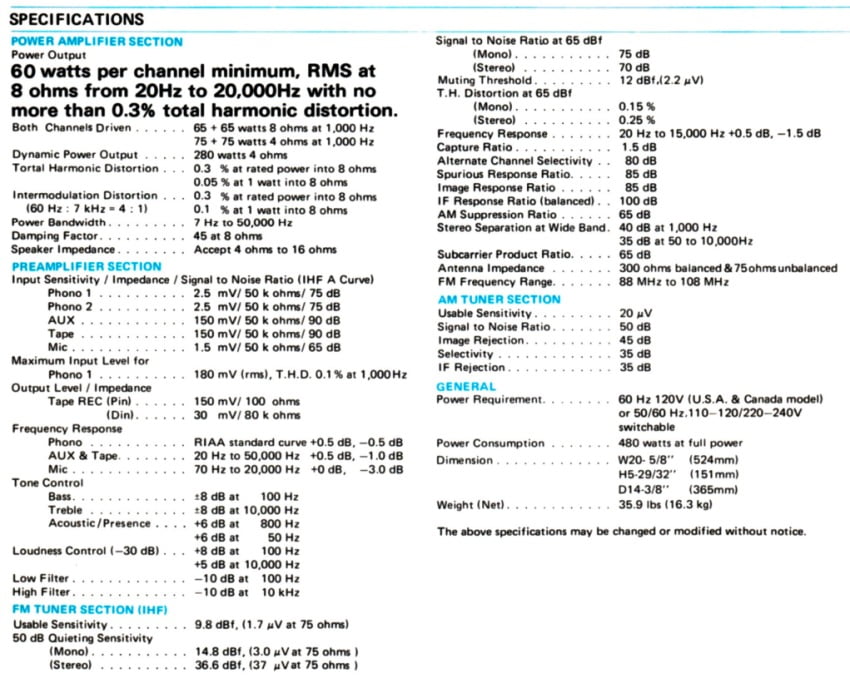
Overall, the Kenwood KR-6600 is a good looking, good performing receiver. It’s mix of aesthetics and performance is a perfect match for someone that is not new to vintage audio but also doesn’t want to spend thousands of dollars on a high end receiver. While Kenwood may not get the same recognition as Marantz or Pioneer, their receivers can perform just as well and the KR-6600 is no exception.

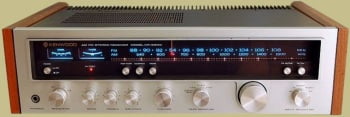
I have a Kenwood KR-6000 in great working condition. As well as 2 pioneer CS-700G & 1 pioneer CS-A700 speakers for sale. 316-516-7347
Do you still have your KR6600 for sale?
If so, please email me at vasokyllc@gmail.com
Thx
Do u have Kenwood KR – 6600 for sale?
What’s the price & shipping charges for India…plz tell